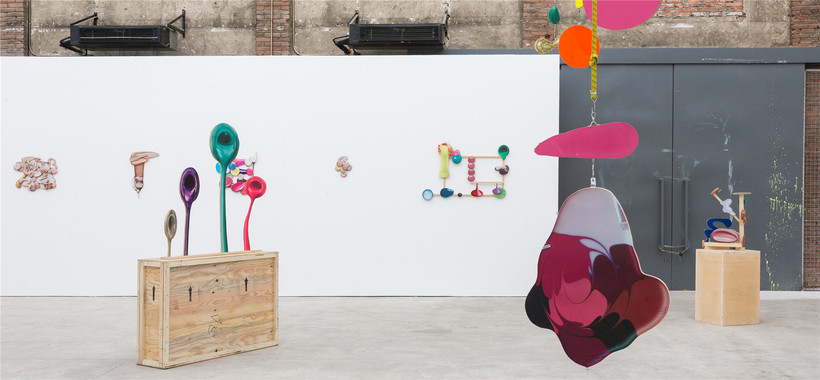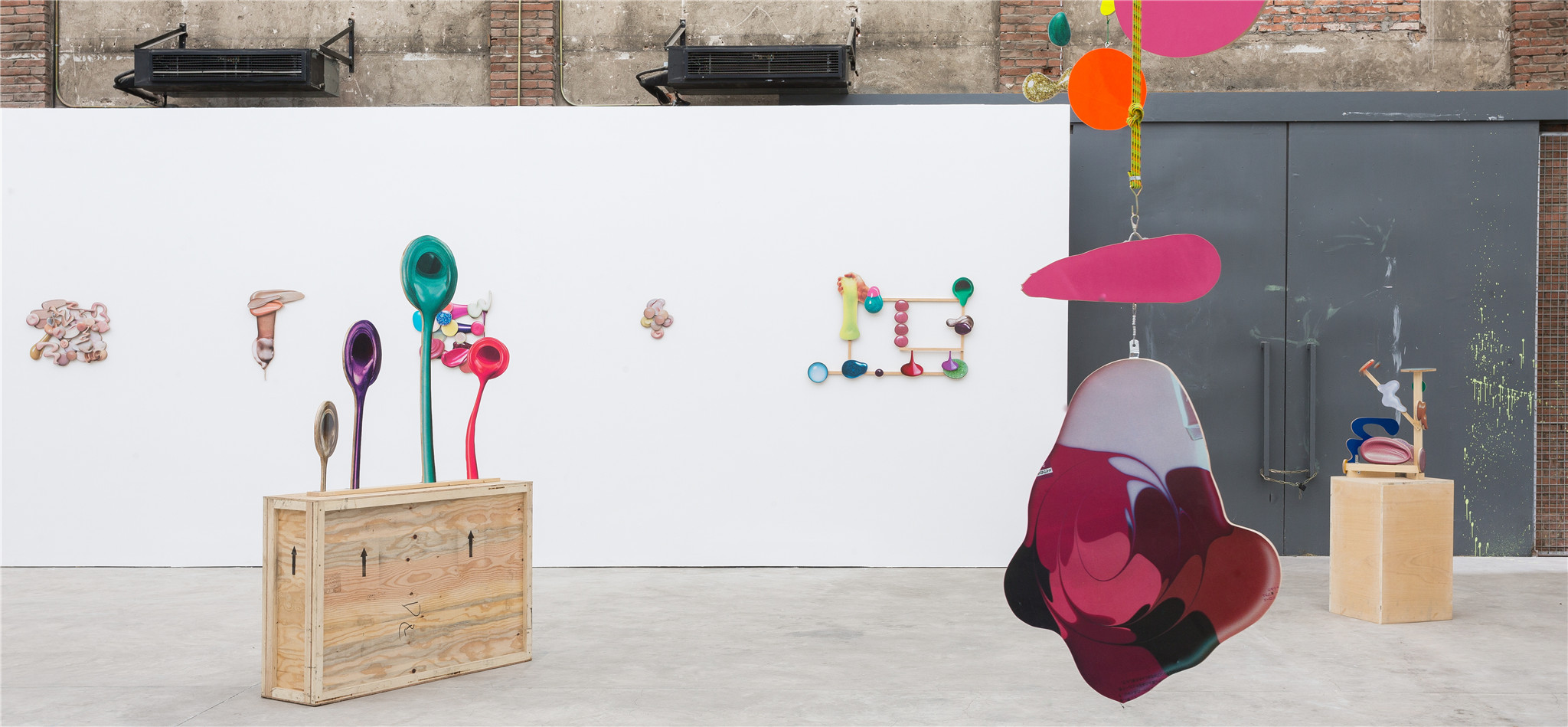The Depth of Lines—On Chi Qun’s Works (Text: Chiba Shigeo)
On the sidewall are three similarly blue-toned paintings of breathtaking beauty. The reason they didn’t immediately catch my eye when I entered the room was only because the painting on the table had such a strong presence. However, as I first glance at these three orderly lined-up paintings, I dwell on the dazzling light and how it interacts with the piece. Generally, we appreciate paintings which are perpendicular to the ground and, as viewers, we barely detect things that are imperceptible under such conditions, things only pinpointed when the painting is laid flat. I was only informed of this when I walked into Chi Qun’s studio by chance, however I believe artists are already aware of it.
Now that my attention drifts from the tabletop piece to the pieces on the wall, I can notice it subtly glistening, and can capture a look at the inner space of the work more precisely. Chi Qun’s work is abstract, but what exactly is the ‘abstract’ she depicts? I think referring to established concepts of ‘abstract art’ in a slipshod manner, or approaching it merely through its history, cannot reach the true message of Chi Qun’s work. For instance, the interaction between light, shadow and the painting in the works on the wall, further refines the work’s expression. If we ignore all these details and rely only on the term ‘abstract’, we won’t touch the essence of her oeuvre. Compared with the piece on the table, the paintings on the wall appear more meticulous and concise, fluttering their invisible wings, unnoticeable unless observed attentively, and worthy of praise for their beauty.
Many artists in the past recreated on the canvas what they saw, in a loyal or slightly transformed fashion. However, this kind of work, with its monotonous representational technique, rarely interests viewers, as it is just repetitive. Chi Qun sets out to represent something different; according to her, she drew inspiration from Cubism and Cézanne’s late works, and learnt how to detach from the pure ‘representational’ and leap towards the truly ‘abstract’. An an logy for the so-called ‘abstract’ is extracting the juice from a lemon, namely, an act of extracting the essence. In other words, she is not painting anything specific, but ‘painting’ itself, or allowing the ‘painting’ to reveal itself. Abstract art values essence most of all.
To Chi Qun, the process of extracting ‘essence’ intercepts with the ‘line’. A painting is composed of lines, colours and spaces, or in other words, a painting is a space composed of lines and colours. First of all, Chi Qun fills the canvas with layers of colours, and starts to thin them out until lines emerge. The final colours of her works depend on the depth of the lines. For instance, half of the canvas is left with colours on the top, while colours in the other half are whittled down to one of the layers. In this way, lines generate multi-layered variations. This approach to painting forms the space in her work where light and shadow shuttle back and forth.


